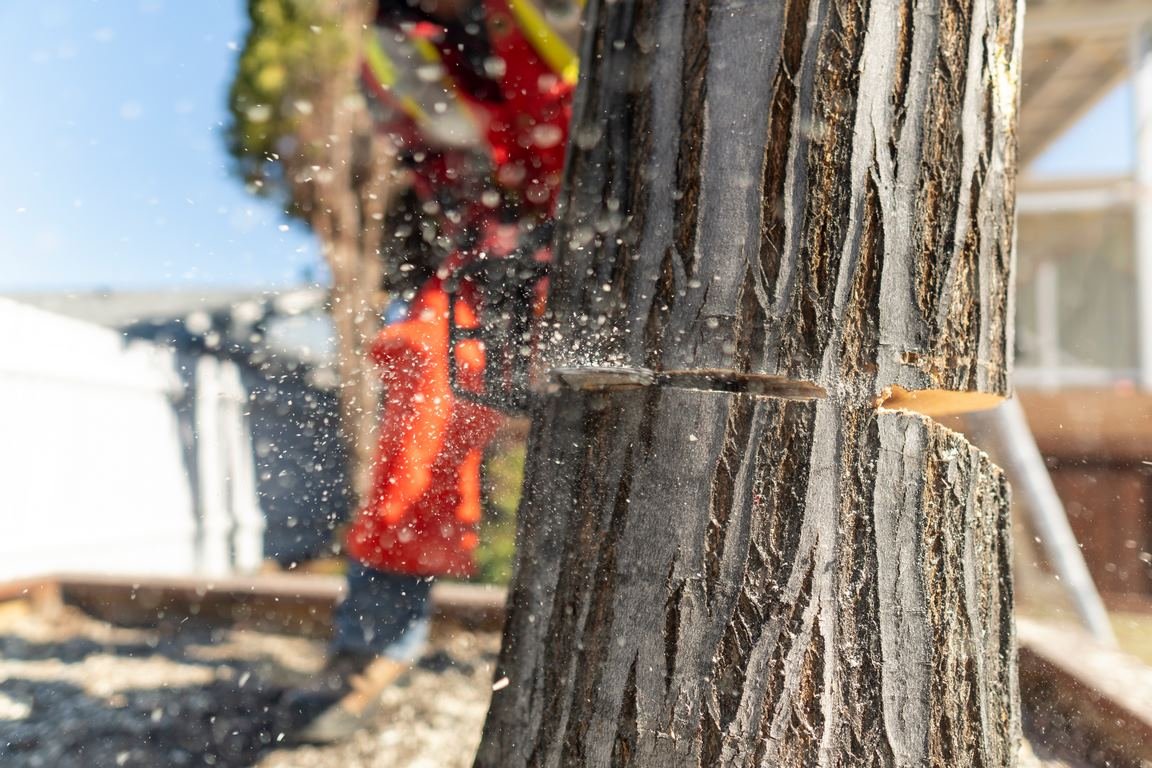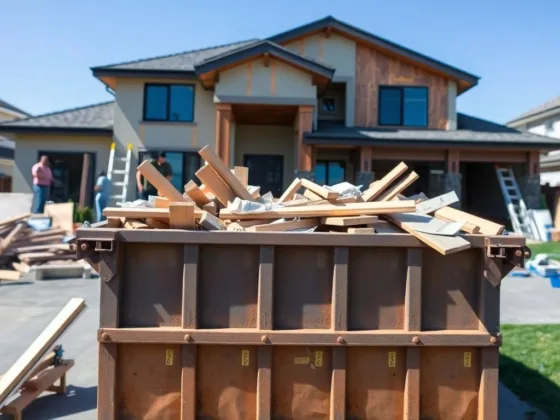Table of Contents Show
Trees are absolutely stunning and can be found almost everywhere —but sometimes, these gentle and vital organisms of nature have got to go.
This process of removing trees is called ‘tree removal.’ It’s done to remove trees that have become a hazard and protect your home, loved ones, and yard.

So, how will you know if a tree has to be removed? To find that out, here are the following issues that may call for tree removal:
- Damaged, diseased, or dead trees – such trees may cause injuries because they’re susceptible to unexpected breaking and falling.
- Leaning trees – These trees are in danger of falling. Therefore, they have to be removed right away.
- Trees in close proximity – Trees may damage any structure if they remain close to it. This situation may also call for tree removal services.
- Fallen tree – Fallen trees may have fallen over other trees or electrical lines. So, they have to be removed immediately.
Now that you know when to conduct tree removal, it’s time to learn how to do it properly with this guide detailing the steps to undertake before, during, and after tree removal.
But before you proceed, it’s best to consult tree removal experts to detach trees from your yard safely and effectively. So, call your local tree care professionals for help or you may visit useful online sites like https://www.treepnw.com/.
What Should You Do Before Tree Removal
When you decide to chop down a tree, understand that there are things you need to do beforehand. This applies especially if you’re planning to remove it yourself. Below, you’ll discover how to prepare everything prior to tree removal, including when it should be done.
Read Also:
Conduct Tree Evaluation
Evaluating trees is a critical step for safe and proper tree removal. Therefore, skipping this step will put everyone in danger, which may lead to injuries and even death. That said, here are the questions you need to look for the answers to when conducting tree assessments:
- What is the size of the tree?
- What is the species of the tree?
- Is it a dead tree (as mentioned above)? Keep in mind that dead trees are riskier to remove.
- Are there electrical lines nearby? If there’s any, you’ll need to communicate with the utility company to cut down power during the removal to avoid getting electrocuted.
- Is it structurally defective, damaged, or diseased (as mentioned above)?
- Is a permit required when cutting down a tree?
- Is the tree located on your property?
After evaluating the condition of the tree and its surroundings, you’ll have a better idea of what to do when you have to remove it and how much the whole tree removal project costs.
Protect What’s Around The Tree To Be Removed
Once you’ve inspected and evaluated the tree to be removed, it’s time to protect everything around it. With an added layer of protection, you’ll be able to prevent further damage due to heavy equipment and falling trees. This will help preserve your landscape and other structures surrounding the tree too.
Here are the things you might need to protect, depending on the location of the tree to be removed:
- Outdoor furniture, such as sofas, tables, seat cushions, benches, and others;
- Pergolas, fences, gazebos, trellises, arbors, fountains, light fixtures, and other structures;
- Nearby trees and woody shrubs;
- Patios and pavements;
- Potted plants;
- Family and pets;
- Neighboring trees and other structures; and
- Migratory animals, particularly birds create nests in trees in spring.
In other words, move anything (including pets and family members) away from the tree to be removed and green waste (wood chipping). Keep in mind that falling tree branches may cause serious injury and even death if they’re not treated with caution.
Make A Staging Area Plan For The Tree
Trees may be much bigger than you think. That’s why it’s difficult to assess how much space a tree would take up once it’s removed. Hence, it’s important to prepare a lot of space where you can place leafy branches and park heavy machinery.
In addition, keep in mind that the equipment used in safe and efficient tree removal is extremely massive. And you have to ensure that there will be enough space for all of it.
Depending on the condition, location, and size of the tree to be removed, except that the following pieces of heavy machinery will be necessary:
- A crane or bucket truck to reach the tree and eradicate its green waste;
- A wood chipper to reduce the green waste into a manageable size;
- A crew vehicle or truck to store safety tools and gear; and
- A stump grinder to pull out the stump.
During tree removal, it’s more efficient to have bucket trucks and cranes closer to the tree. This means parking them on the driveway, street, or your lawn. Also, the wood chipper should be situated in close proximity. This will help your crew to transport huge loads of branches easily.
Inform Your Neighbors
Being a good neighbor is an important part of preparation before tree removal. Removing trees can be extremely noisy, which is often unbearable to most people. Henceforth, make sure to give your neighbors tons of heads up before the tree removal process begins, especially if:
- Your tree is entering their property;
- Their tree is reaching your property and has a chance to be damaged during the process;
- The tree removal team needs to enter their property line to remove and clean green waste produced during the process; and
- Heavy machinery and trucks need to use their parking spaces.
What Should You Do During Tree Removal
Removing trees can be done using tree felling or crane-assisted tree removal. Below is the discussion that tackles the differences between these two tree removal methods. Make sure to follow the process carefully to avoid getting catastrophic injuries.
Tree Felling
Tree felling is the process of cutting a tree and waiting for it to fall. Understand that it’s an extremely dangerous method that may lead to physical damage and death, especially when it has been miscalculated. Here are the steps to perform this technique safely:
- Look for obstacles. Check if there are any obstacles you need to avoid, such as cars and other physical structures. This is because a tree may fall in an unexpected and unpredictable direction.
- Know where the tree will fall. Determine where the tree should fall. Then, make sure that these paths are free from anything to ensure a clear escape route when something unexpected turns up.
- Make a horizontal cut. A horizontal cut should be below your hip and shouldn’t extend to more than one-third of the thickness of the tree. Plus, this cut should be perpendicular to the direction of the fall.
- Make a notch cut. Create a notch cut or wedge cut on the side of the tree—the side facing the direction where the tree is expected to fall. You might need to use a chainsaw and give the tree a V-shaped cut. The right angle and depth will depend on the size and thickness of the tree.
- Make a back cut. This cut will determine how the tree will fall. It’d be best to do it as thick as you can. Additionally, it should be 1.5 inches (minimum) higher than the horizontal cut for better outcomes. And make sure to leave a small section as a hinge between the wedge cut and the back cut. This will help control the fall of the tree.
- Get ready. Once the back cut has been made, the tree is ready to fall. So, you should be prepared to run anytime soon.
- Run quickly. When the tree starts to fall, use the escape route you planned a while ago and get away from the tree. Focus on your escape, and don’t turn your eyes off the falling tree. Doing so increases your chances of being safe and reduces the likelihood of getting serious damage.
Crane-Assisted Tree Removal
As the name implies, crane-assisted tree removal is the process of chopping down a tree into pieces and removing it using a crane. Usually, this is performed in urban areas and for removing extremely large trees. Some tree care companies have their own crane equipment to use, while others may rent only when necessary.
Sometimes, this tree removal method will require someone to climb up and continue the removal. This will require wearing safety gear, such as a harness, shoes, spikes, ropes, and the like.
Every piece of the tree will be secured to the crane with a chain or a rope before cutting it down using a chainsaw. Then, each piece will be removed by the crane.
What Should You Do After Tree Removal
Once the tree has been completely removed, you may convert it into firewood or something useful. But what will you do to the stump left after the process? Of course, you don’t want to leave it just like that. It’ll only be infected with unwanted fungi that can be passed on to other nearby trees and shrubs.
Stump grinding is the process of removing the stump from tree removal. Your tree care experts will use a stump grinder to grind the stump back and forth into smaller pieces. Also, ask your tree removal team if it’s ok for you to keep the mulch from the grinding process— it’s perfect for composting and gardening.
Final Words
Tree removal is necessary to get rid of trees that may pose a risk for you, your family, and your neighbors. When removing a tree, ensure that everything is prepared so that the process will proceed accordingly.
After removing it, you’ll be left with a stump, which you don’t want to leave behind to discourage the growth of pests around your home.
Furthermore, keep in mind that tree removal is dangerous. So, instead of doing it all by yourself, it’d be best to hire a tree care professional that’ll help you through the process without causing any damage or injury.










